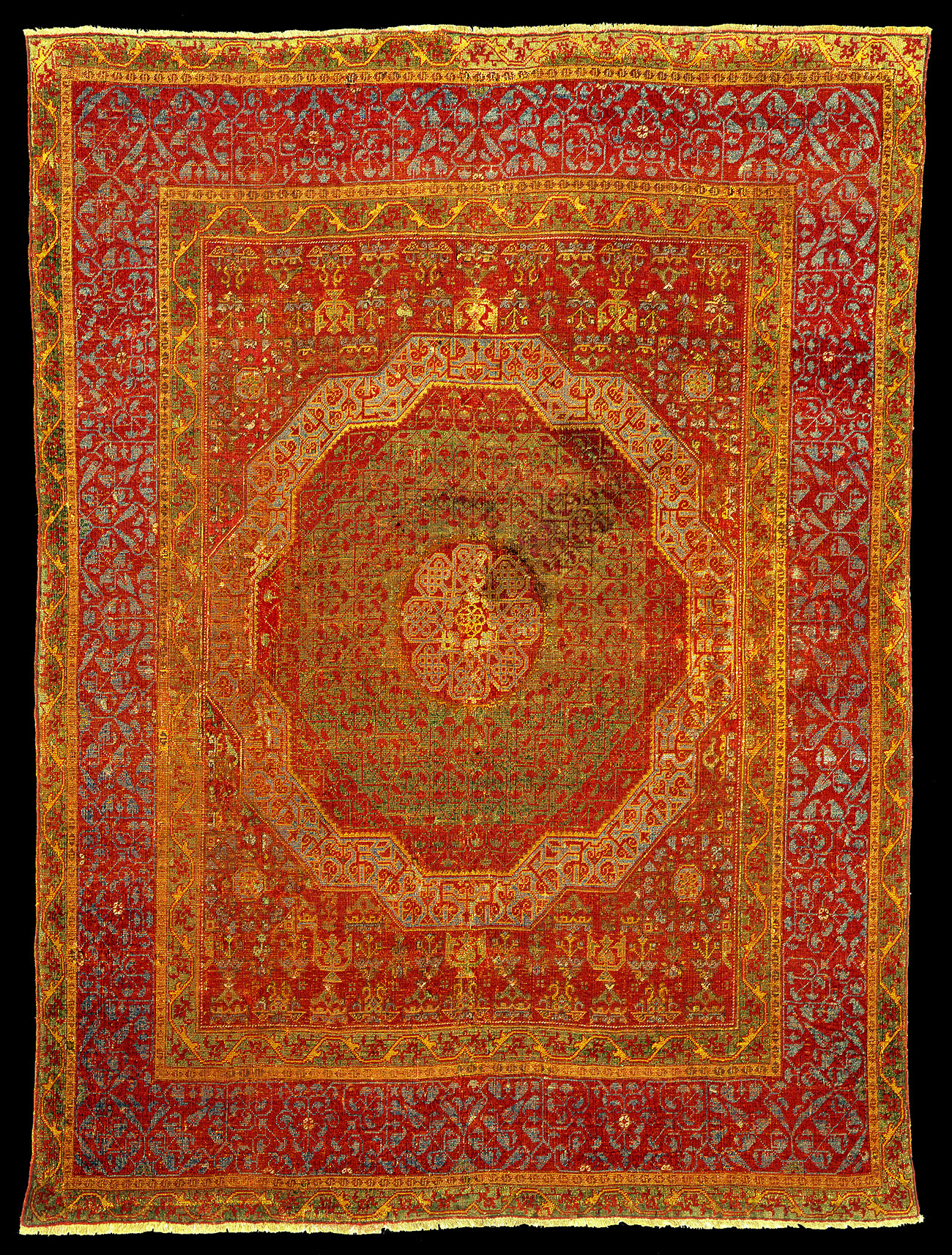|
Mamluk
Carpet, early 16th century, Cairo, Egypt. The C. L. David Collection,
Copenhagen
Pile “Mamluk carpet,” wool
Egypt; 1st quarter of 16th
century
199 × 145 cm
A palette with red, light shades of blue and
green, and sometimes yellow, coupled with a clear geometric organization
around a central octagon, is characteristic of “Mamluk carpets.” Typical
elements are also interwoven patterns and borders that bring to mind Kufi
calligraphy and stylized papyrus flowers, as seen in both the central
octagon and the widest border.
The carpets were knotted in
workshops in Mamluk Egypt, and their geometric structure reflects the art
of the day as found in e.g. book illuminations, but also in the ceilings
in the rooms whose floors they graced. The production of carpets of this
kind stopped more or less at the time when the Ottomans conquered Egypt in
1517.
Inv. no. 1/1987
|

